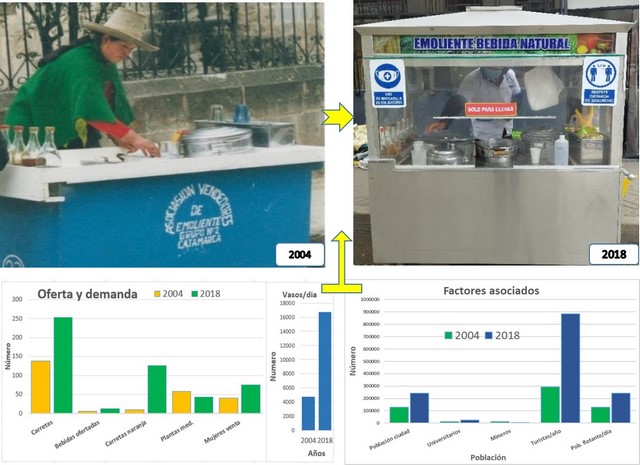Factors associated with changes in nutraceutical beverages sold in outlets in the city of Cajamarca (Peru)
DOI:
https://doi.org/10.30972/bon.3216371Keywords:
Emollients, ethnobotany, nutraceuticals, medicinal plantsAbstract
Medicinal plant beverages sold in the streets of Peru constitute traditional nutraceutical foods, that are little studied. Changes and the socioeconomic factors associated with these changes, in the beverages sold in the city of Cajamarca (Peru), were evaluated between 2004 and 2018. Methods included surveys, interviews, direct observation and participatory observation. The number of beverages offered ranged from 6 to 12. The “maca” (Lepidium meyenii Walp.) cart left the market, and the “sugar cane” (Saccharum officinarum L.) juice cart entered. The number of carts increased by 84%, and “orange” [Citrus sinensis (L.) Osbeck] juice became the most important. Medicinal species decreased by 26%, with exclusions, inclusions and new combinations, and were recommended for nine types of conditions. Overall demand grew by 251%. The most important factors associated to changes were the growth of the floating population (university students, mining workers, tourists and travelers) and the relevance or “boom” of Peruvian gastronomy. Beverages were able to position themselves in the market and grow through diversification and improvements. This research provides information on dynamics of the beverages and the plants used and has a historical character for the city of Cajamarca and Peru.
Downloads

Downloads
Published
How to Cite
Issue
Section
License
Declaration of Adhesion to Open Access
- All contents of Bonplandia journal are available online, open to all and for free, before they are printed.
Copyright Notice
- Bonplandia magazine allows authors to retain their copyright without restrictions.
- The journal is under a Creative Commons Attribution 4.0 International license.














.jpg)


